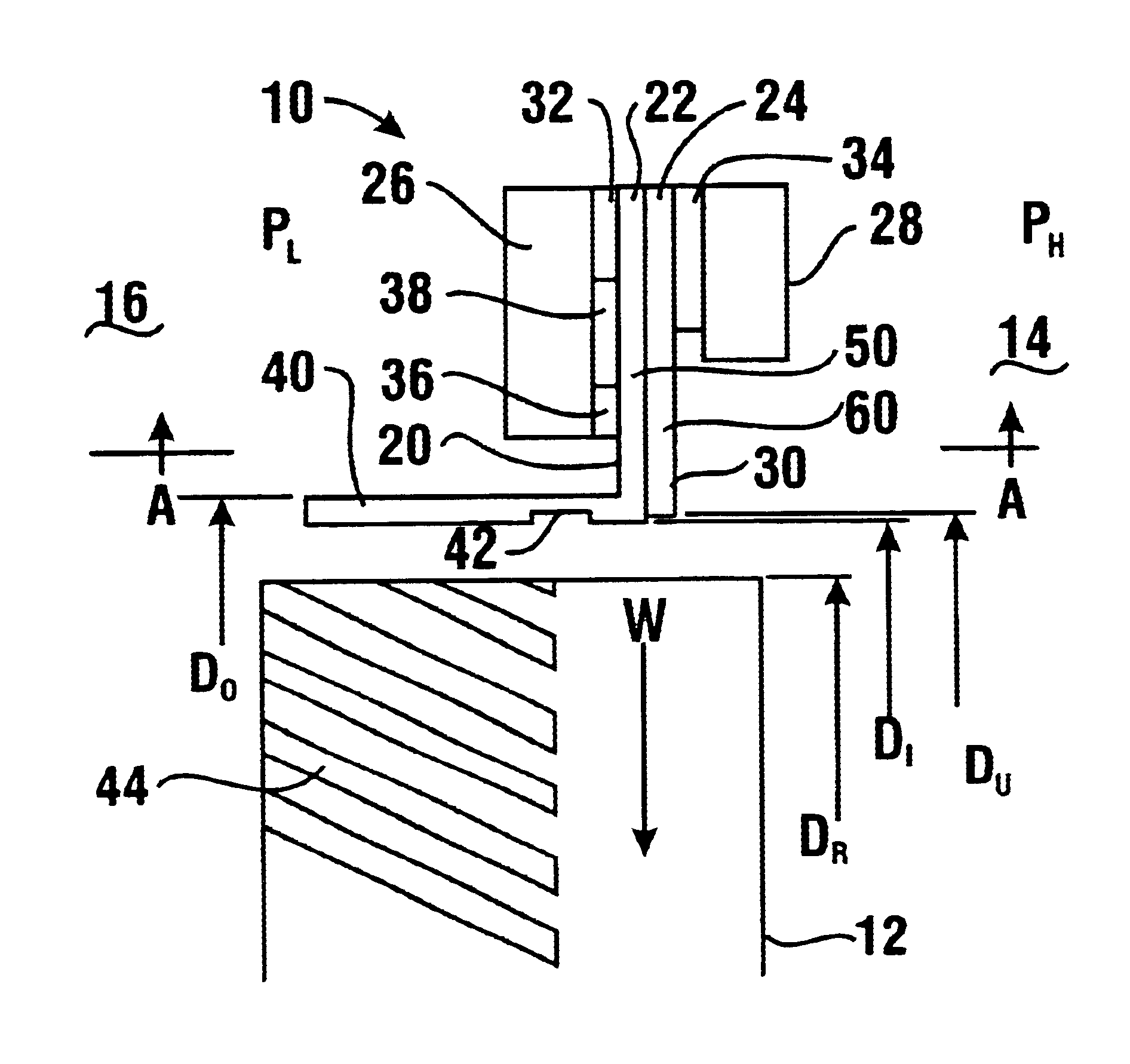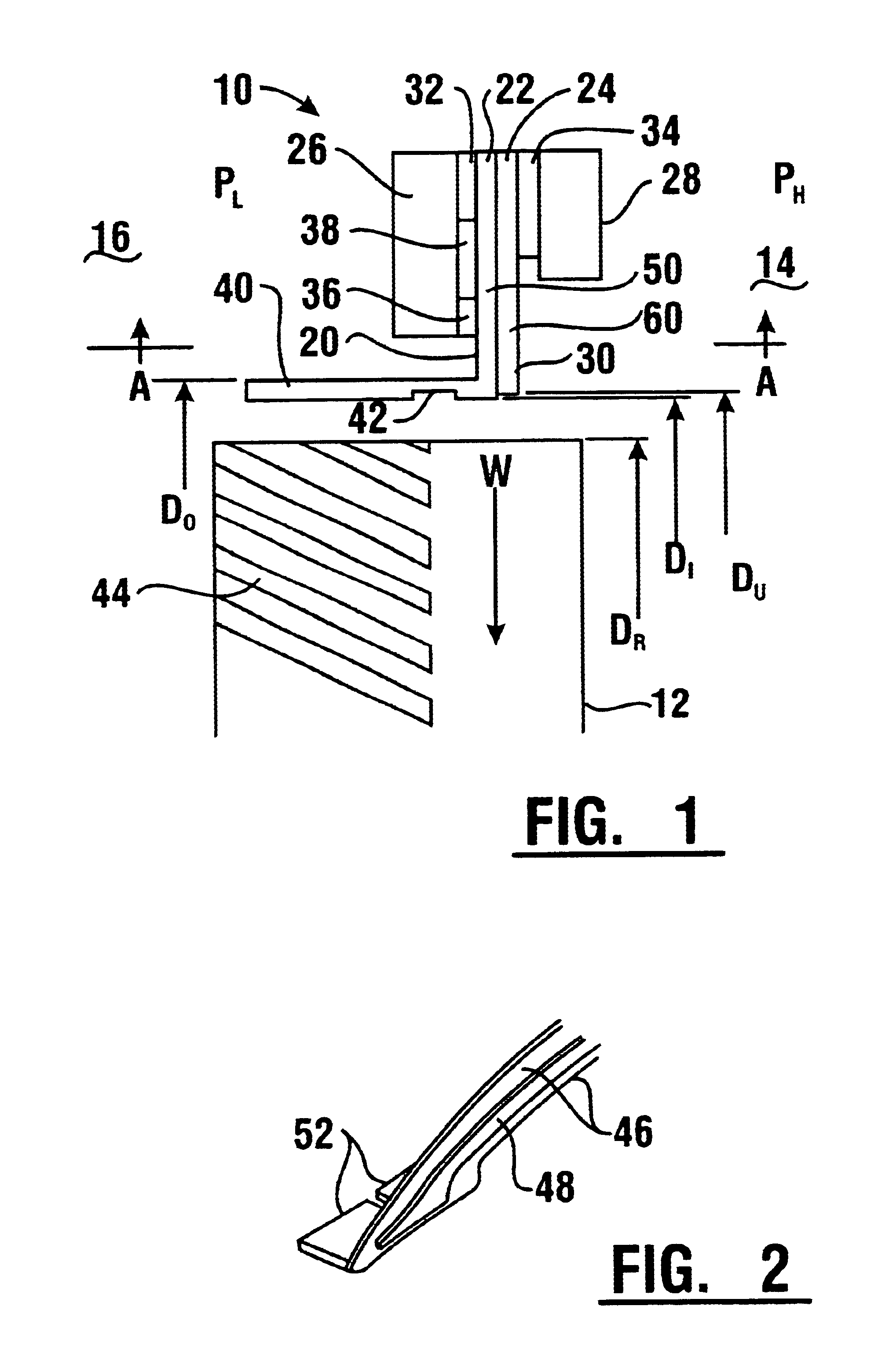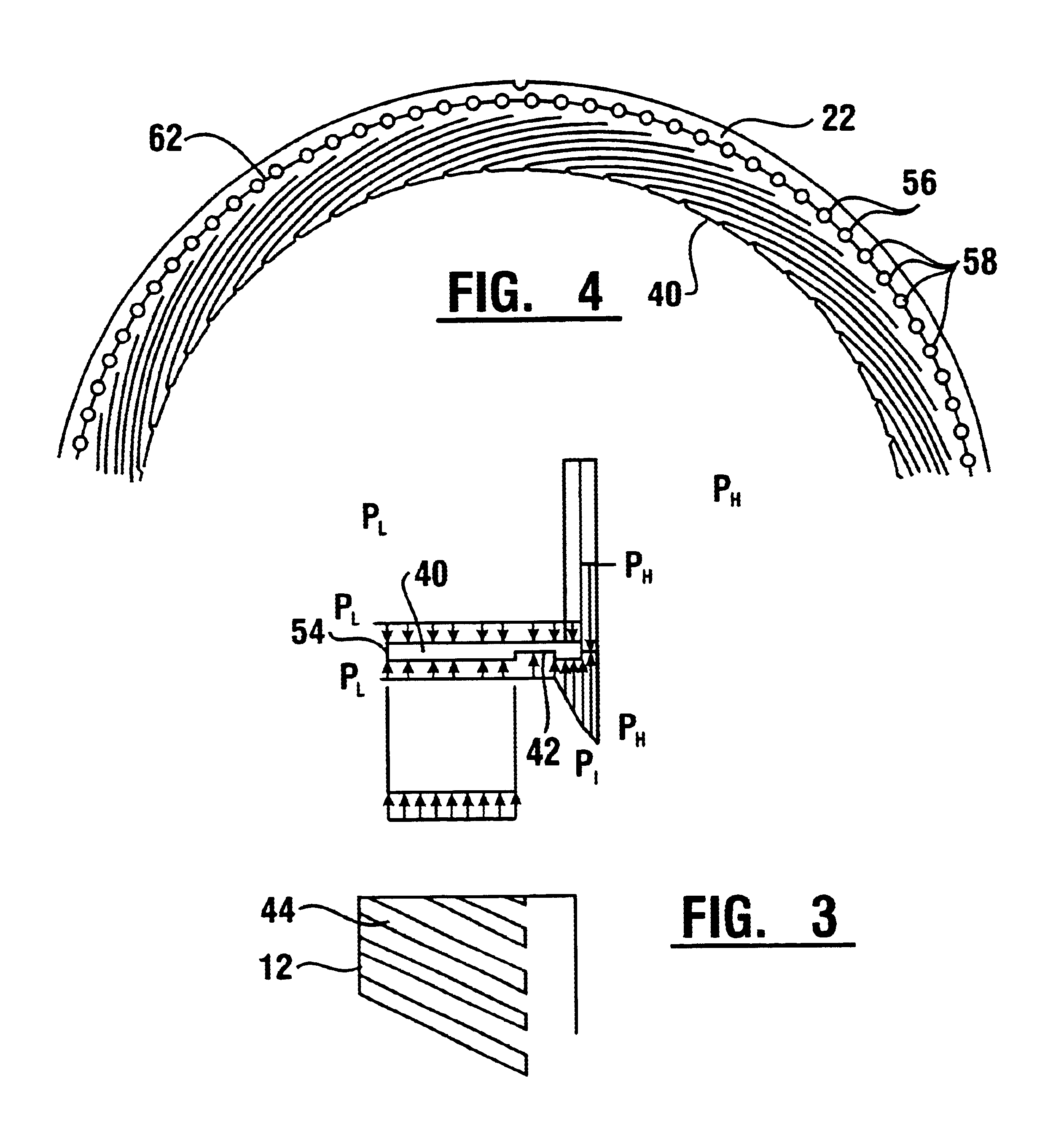Noncontacting finger seal
a finger seal and non-contact technology, applied in the direction of engine seals, leakage prevention, machines/engines, etc., can solve the problems of reducing the life of the seal, unsuitable for this purpose, and substantial adverse effects on the performance of the functions
- Summary
- Abstract
- Description
- Claims
- Application Information
AI Technical Summary
Benefits of technology
Problems solved by technology
Method used
Image
Examples
Embodiment Construction
Referring now to the drawings and particularly to FIG. 1, there is shown therein a sectional view of an embodiment of a finger seal apparatus of the present invention. FIG. 1 shows a noncontacting finger seal apparatus (which hereinafter may alternatively be referred to as "seal" or "finger seal" or "seal apparatus") 10 adjacent a rotatable member 12 and intermediate an upstream zone or region 14 of relatively high fluid pressure (P.sub.H) and a downstream zone or region 16 of relatively lower fluid pressure (P.sub.I). The finger seal apparatus 10 can include axially juxtaposed annular comb-like members or finger elements 22, 24. Each finger element can have a plurality of uniformly spaced and integral comb-like teeth or fingers. A finger element may comprise a whole ring with a plurality of fingers. Further example and discussion of various components of a finger seal may be found in U.S. Pat. Nos. 5,755,445 and 6,196,550, the disclosures of which are incorporated herein by referen...
PUM
 Login to View More
Login to View More Abstract
Description
Claims
Application Information
 Login to View More
Login to View More - R&D
- Intellectual Property
- Life Sciences
- Materials
- Tech Scout
- Unparalleled Data Quality
- Higher Quality Content
- 60% Fewer Hallucinations
Browse by: Latest US Patents, China's latest patents, Technical Efficacy Thesaurus, Application Domain, Technology Topic, Popular Technical Reports.
© 2025 PatSnap. All rights reserved.Legal|Privacy policy|Modern Slavery Act Transparency Statement|Sitemap|About US| Contact US: help@patsnap.com



